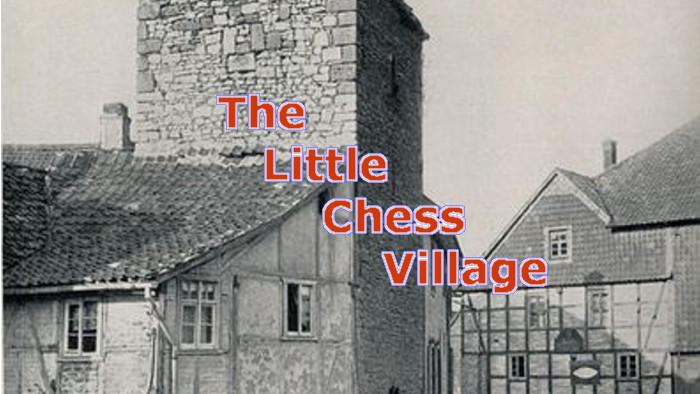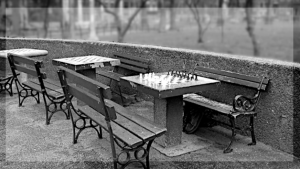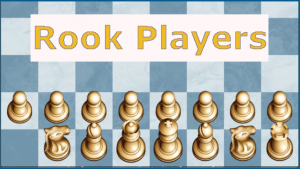
The Little Chess Village, Part I

This image comes from "The Book of Games" comissioned by Alphonso X, 1283
Prologue
The most significant event to occur in the history of chess was the transformation of the game from its Medieval form into its Modern form. This metamorphosis that spanned most of Europe during a time of sluggish communication and laborious travel, occured within the amazingly brief confines of about 30 years. The first we know of this change was around 1480 in Valencia, Spain and by 1510 Medieval Chess wasn't to be found anywhere in Europe other than in Holland and Germany. Harold James Ruthven Murray maintained that, since Germany was more insulated, Modern Chess didn't arrive there for another generation. But even more insulated and much slower to change was the small German vlllage of Ströbeck, located in the Harz Mountains. This village had a reputation for centuries as the Chess Village (Schachdorf Ströbeck). But Modern Chess, when it did arrive, was played far differently in Ströbeck than what much of Europe was used to. In his 1616 book, "Schach- oder König-Spiel," Gustavus Selenus (the anagramic pseudonym for Augustus, duke of Brunswick-Lüneburg), noted that there were 3 forms of chess played in Schachdorf Ströbeck - Courier, Old and "Welsch."
The first of these is a modification of chess played with additional pieces upon a board 12 by 8 squares. The second is the unreformed mediæval game as described by Egenolff. The third is the reformed European game (Modern Chess) but with certain peculiarities. (Murray)
A Brief History of Schachdorf Ströbeck
In 1651 Elector - or Kurfiirst - Frederick William of Brandenburg (electors were members of the Holy Roman Empire's Electoral College who voted for the king) visited Ströbeck. He presented the village with a chessboard 8 by 12 squares on one side and 8 by 8 squares on the other side. Additionally, he presented the village with 2 sets of chess pieces: a Courier set of silver and a standard set of ivory. The pieces have been long gone but the chessboard remains - according to Emil Shallopp, with this inscription (translated). Murray mentioned the inscription but didn't try to quote it:
"His most Serene Highness Frederick William of Brandenburg was, on May 13, 1651, graciously pleased to present this chessboard to the village of Strobeck ; and because of their long-famed skill in chess to promise to the residents his protection, and this if for a perpetual memorial thereof."
Legend also suggests that in 1744 Frederick the Great, en route to Frankfort-on-the-Main, visited Ströbeck and being a chess-lover, challenged the mayor to a game. The king lost his game and gave orders for an emissary to be sent to the village every year to play a game in the public square with the strongest village player. Should the emissay lose his game, the village would be exempt from taxes for that year.In 1823 chess was instituted as a school subject in Ströbeck. Three years later the village was visited by Hirsch Hermann Silberschmidt, often referred to as "the celebrated chess player," though he is seldom remembered today. Silberschmidt played several games, winning easily. In 1845 The "Chess Player's Chronicle" ventured the story that a friend of Silberschmidt had gone to Ströbeck where he lost a considerable amount of money playing chess. To avenge his friend, Silberschmidt challenged the villagers to series of three games, staking a large amount of money against a Certificate of Conquest should he win. After he won, the villagers dragged their feet so long in procuring the certificate that, once he finally did receive it, he had it published in newspapers throughout Germany.
In 1831 the better-remembered William Lewis also visited Ströbeck, also played villagers in three games and also won easily. Lewis published an account of his stay at Ströbeck which can be read here ⇨ Journey to Ströbeck.
"The reputation of the play of the villagers has always been in excess of the real facts. None of the 19th century visitors found any player of more than medium ability." -Murray
Part I is a simply pictorial of Schachdorf Ströbeck.
Part II will look at the chess that was played in Ströbeck.
Part II will look at the chess that was played in Ströbeck.
Schachdorf Ströbeck Pictorial
Harriet Geithmann contributed an article called "Strobeck, Home of Chess," to' "The National Geographic Magazine," published in May 1931. The article contained 8 photos,







The following four images were published in the "Illustrated London News" on Aug. 12, 1905.




The following three images were published in "World Today" in January, 1909



Miscellaneous images:

Preparing for a Living Chess game in 1932






Ströbeck Chess badge

The "Chess Tower" where Gunzelin of Kuckenburg was supposedly imprisoned.

Going to school


Commemorative Chess-themed money from 1921

Hanging chessboards outside of windows






